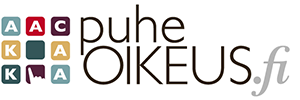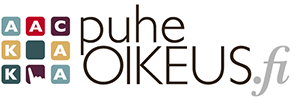AppsforAAC.net made a thorough review on Tobii Sono Flex in September. It has been commented on the net after that. http://appsforaac.net/content/tobii-sono-flex-review
I fully agree with the analysis of both the anatomy and physiology of the full communication app. Today, there is a version in Swedish, too. I’ll comment on both Sono Flex per se and the Swedish version, too.
I’d give Tobii Sono Flex 3.5 stars, 4 stars the day that the grammar can be seen as symbols, too. It’s a little too much (and does not quite fit into the aspects of teaching and learning) for an illiterate person to remember the places for past tense, future, plurals, possessives and articles, just to mention some. Those arrows and pluses/several objects are found in Proloquo2Go and in BM, Widgit Symbol Writing (PCS) etc and they are urgently needed.
On the net, there are quite contrary views on whether synchronising between several (5) devices is possible or not. Comments?
The Swedish version came to the market in August (2012). Tobii is to be congratulated for that! We’ve been waiting for a full app for 4 years now, so it is great to have one. One asset is that there is a family of products by Tobii. We will most probably start a systematic use of the app and the PC Communicator in parallel. Then, the PC-version will be connected to other devices at school and the app be used on the hand held iPod ‘anywhere’. That allows the parallel use of Lexia/Lexion on the PC, too.
Sono Flex is the first full communication app in Swedish. Thus, it has eagerly been waited for. It’s a relief to have it. The more we use it, the more we are able to turn it into the threefold use mentioned in the heading: a communication app, a learning tool and an AAC-special education means in one. Contexts are made for the different subjects and themes at school. There is systematic modelling of sentences (even using a ‘book’ that grows during) so that everyone knows how to use both the device and the app. The kids learn both what one might want to say and also to do so – not that surfing around has been any problem hitherto, but it is important to expand the linguistic skills systematically as one would do for a ‘normal talker’. By putting in signs and by making some sort of school book substitutes, a full communication app works wonders.
One more aim of ours is to upgrade the communication a. to the level of the kid him/herself – hitherto most devices have been too limiting – even special kids want to talk and comment, not just to follow orders or ask for yoghurt and b. to take serious things up for discussion: abuse, wrongdoings (from the part of personnel, bureaucrats) and words needed in order to get assistance (by law, in Finland, handicapped are supposed to show capacity to be the boss and in order not to give assistance, some towns demand better explanations than so called ‘normals’ could ever think of. It’s not ‘enough’ to say that ‘I love swimming’, nor that ‘it is my legal right to have a hobby even being disabled’, no, some towns ask for specifics (bus ticket handling, fees, lockers, counting the money and change, assisting with zippers… – these ‘management skills’ are required from non-speaking, autistic persons with cognitive disorders – the result being: ‘NO, no assistance, no capacity to act as boss’. How could the individuals give sophisticated answers like that, without getting reach to words and symbols? And how can a kid using some 12-24 button devise tell that there is mental abuse or hitting going on at school, that no one knows any AAC?
One of the commentators to the review by AppsforAAS.net states that Sono Flex is a little too American. I agree. However, one might find Lucia there, too – but pronounced in absolutely no existing language whatsoever. But that can be fixed: Lu sia (loo-see-ah). How the voice is able to say ‘baseboll’ right, but yet calls the boll itself ‘basseballen’, is a mystery.
For a Scandinavian special kid/youth/individual, it’s a relief to get a Right to Talk. Yes! At last! And it’s fast, user friendly, fun and cool! And the device can be handheld.
From a total life perspective, let me give you some statistics:
Lead times decreased from 4-8 years (getting any device) and 7-8 months (getting the device into (almost non-existing) use to 4-5 seconds and 1-2 days – a little depending on what perspective we use.
Still, in 20012, the public system (in Nokialand and PISA Top Country Finland with a superb health care system) ponders, if iPods/iPads are to be seen as aids! The question seems very tough for the system to answer, so the devices are not being distributed in a systematic way.
Also the separate Business Units argue (in spite of the tax money coming from the same source). The social sector argues that it cannot fund an aid that can be used at school and the educational sector either owns the devices (hardly ever, though, in practice) or tells that you cannot use it as a communication device as the machine is meant to be used for educational purposes (only). It does not seem to occur to anybody that the individual is one, not a sum of communal cost centres. All the cords and security walls are there as obstacles, too. Thus, parents (give up and) buy their devices and apps. It’s not right, but fast. Communication and education are human rights.
It takes minutes or days to decide on buying an iPod/iPad. It takes seconds to start using it. It comes naturally, from the back bone. Modern technology is user friendly, you just start using it, expanding your horizon, knowing that neither the device nor the app will break. The same applies to Tobii Sono Flex. It’s so easy to use and easy to individualise. And the kids adore it, they listen attentively, too.
The public system probably thinks that a ‘serious aid’ must be clumsy, enormous, heavy, user-hostile, filthy expensive and be programmed as rocket science in some Ivory Tower (where no customisation takes place anyway, but the process hinders the users in doing so).
With apps like Tobii Sono Flex, it is possible from Day two at school to programme on the spot. It sometimes takes 1-2 days to get the customisation right, if the school-home-therapist-kid -etc want to coordinate a future theme. But it takes 4-5 seconds to perform.
For the kid, apps like Tobii Sono FLex are fast, easy, fun, full and non-stigmatising. It’s COOL, ‘too cool?’ – is that the reason it cannot always be recognised as an aid? Aid should bee labelled and stigmatising, definitely separated from consumer goods? Is that what we still want?
We’ve done more ‘talking’ during one week in a new class than we did the last year, now that we have the app. It goes without saying that it is good for the ego, too.
The comments on www.appsforAAC.net about Proloquo2Go are right. That’s an app in a totally different league, five stars. But that is no option yet for the ‘smaller languages’.
I would like decision makers to notice and think about the age recommendation, 4+, for both the full communication apps. That means that it is possible to start using, limiting/enlarging/customising/developing the app from an early age. It might even be very useful and pay itself back in no time. You do not have to wait 10 extra years! The same app can grow, just rely on the individuals and trust their feedback and needs.
I’m a little surprised by the downloading age limit 17 years. Alcohol and drug references are ‘frequent’, the screen tells. What? Really? I think that the vocabulary could be even better concerning ‘private parts’, ‘biology’, ‘sex’, ‘abuse’, ‘wrongdoings’, grape varieties and wine testing… Isn’t a handicapped person supposed to lead a normal life? Or to be over 10 years of age one day?
How do I land at my 3.5 star rating for Sono Flex/SWE?
- 5 points for the mere existence of the Swedish version!, the 11,000 word vocabulary, the voice and pronunciation (it works ok in the more monotonous Swedish that is spoken in Finland as mother tongue by 5.5% and to some extent by all) and the graphics
- 4 points for the contexts (we use the normal entrance page, though) – and the sync, if any. The contexts are surprisingly uneven and American, but there are contexts and these permit making sentences on the spot.
- 3 points for only the adult voices being available in Swedish, for the 3-3.5 times more expensive price and for some clumsiness in translation, it being too American and to a lesser degree Scandinavian
- 2 points if the sync does not exist and for grammar not being AAC(in symbols)
The 3.5 star rating rises to 4 stars once the sync is ok and grammar comes with symbols.
Tobii Sono Flex is really useful for all three aspects of life for a special kid with autism, cognitive difficulties, illiteracy and no speech. It gives him or her a voice. It offers a right to talk. It enables you to grow as a person, as such and within the app and within the Tobii product family. It enables an early start. It is (relatively) cheap, fast and user friendly. It’s cool and non-stigmatising. However, it is meant for those who can manage the fixed grids of the screens. For us, it is what we’ve been waiting for. Normally, the buttons are too big and thus the vocabulary too small for us.
I’d use Tobii Sono Flex for immigrants, for bilingual kids, for Finns (and others) learning Swedish (it’s definitely more fun this way), for tourism and just for fun, too.
It’s an aid and the iPod is a gadget too, so why keep up unnecessary fences between necessary communication aids and consumer goods?
Strongly recomended!
Terry Grahn
M.A., MBA(Henley), R.N.(spec)
behavioural scientist, pedagogue/ed/AAC&spec needs
www.puheoikeus.fi Twitter @AAC_Terry
SWE
Samma på svenska: appen är mycket värdefull eftersom man får tillgång till 11.000 ord och ett redskap som inom en enda mojäng och en enda app omfattar en kommunikationsapparat, en undervisinngsplattform och ett slags GAKK-specialpedakomiskt skolbokssurrogat för hela allmänbildningen och skolsubstansen. Börja tidigt, vid 4+ och individualisera, ransonera inte. Billig, snabb, användarvänlig, inspirerande och non-stigmatiserande. Man blir COOL!
FIN
Suomeksi: ruotsinnos tuli tarpeeseen, suomennosta odotellaan. Vihdoinkin täysi ”app”, jossa 11.000 symbolia ja jota voi käyttää puhelaitteena, opetusvälineenä sekä AAC-erityisopetuksen perustana (kaikki oppimäärät yksilöityinä). Nopea, edullinen, innostava ja ei-leimaava – lapsi voi olla jopa MAKEE!







Leave a Reply